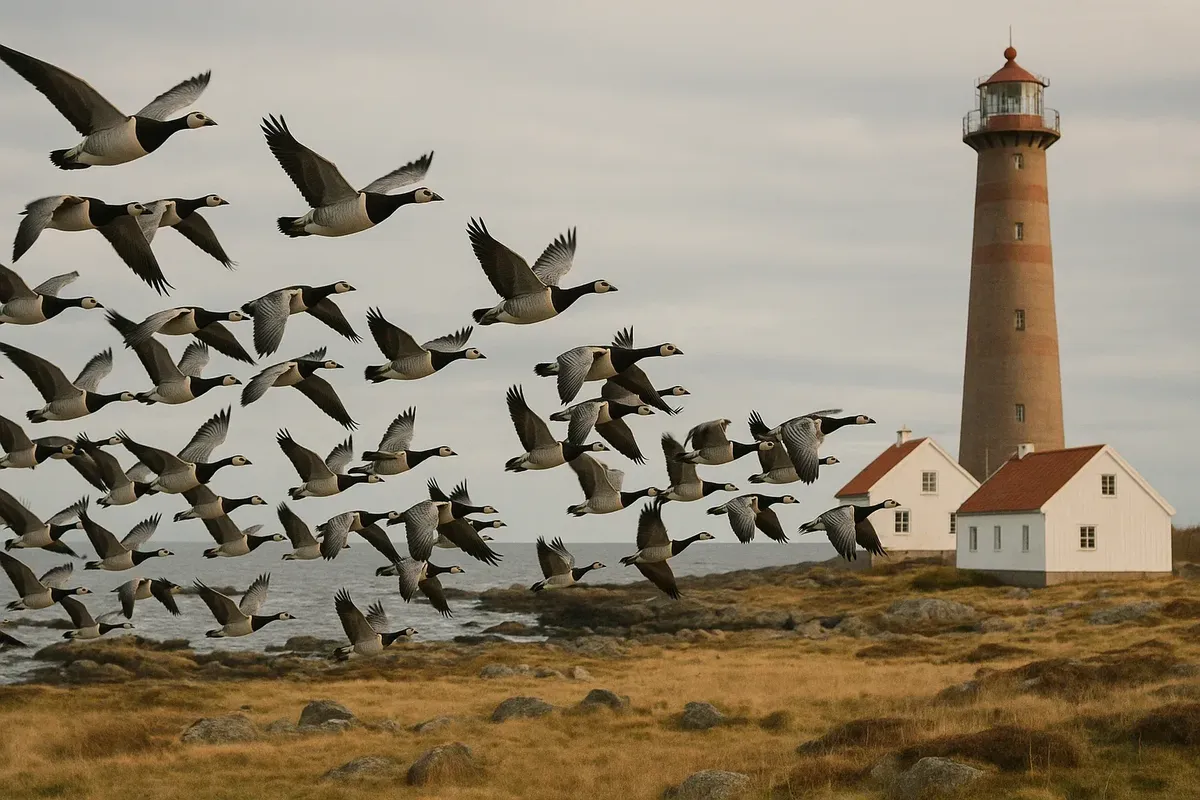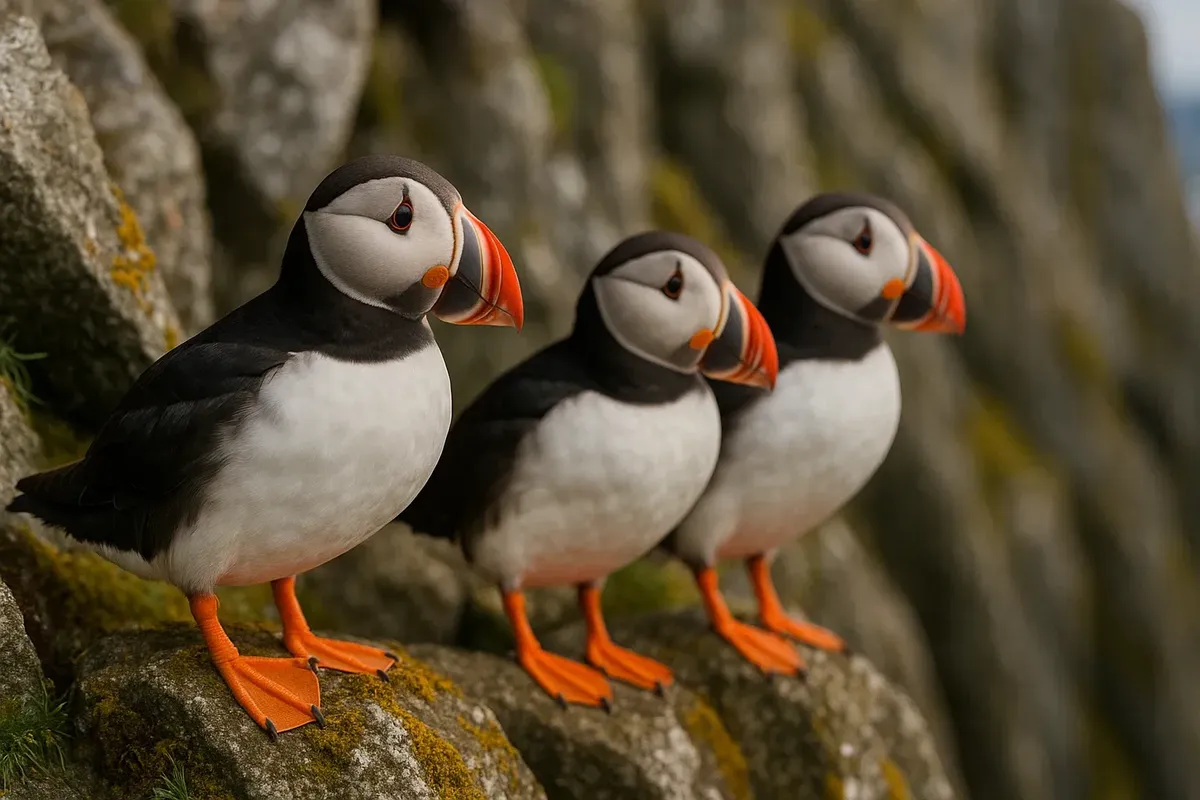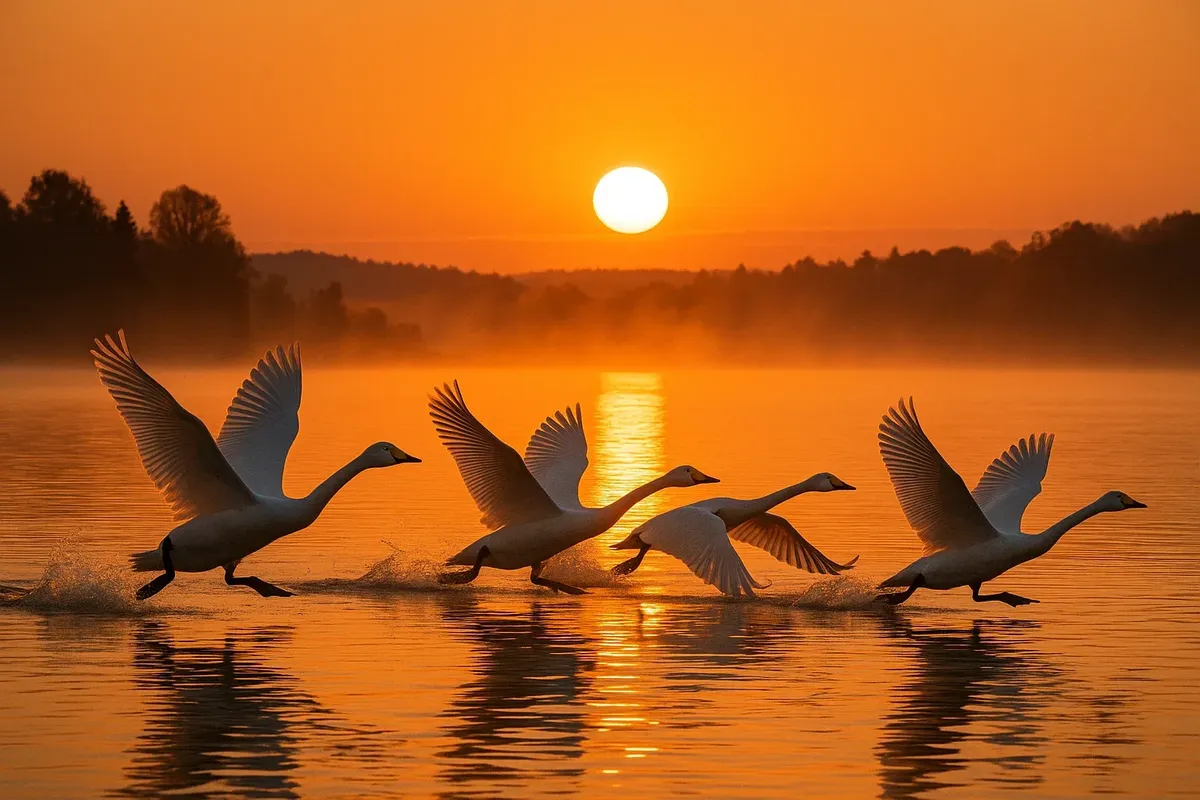🕊️ Bird migration in Norway: a breathtaking natural spectacle
Every spring and autumn, the sky above Norway comes alive as thousands of birds set off on a long journey, forming impressive flocks and filling the silence with loud cries. Come and watch this amazing 'air river' – it's one of the most spectacular natural shows in Scandinavia!
I really hope you enjoy reading this article and find it helpful!
- Do you know what routes go through Norway?
- If you're looking to catch a glimpse of the beautiful migratory 'waves', then the best months to visit are...
- I'm so excited to tell you about the best places to see the birds!
- I've got some useful tips for seeing the migration without any hassle.

| Route | Description | Best Viewing Spots |
|---|---|---|
| Coastal (Atlantic Flyway) | Birds follow the entire coastline, using fjords as "highways" | Lista Lighthouse, Røst (Lofoten), Varanger |
| Inland Route | Flocks cross the southeast, moving along rivers and lakes | Øyeren (Glomma delta), Lake Mjøsa, Gudbrandsdalen |
| Mountain Passes | Some species choose a short but tough route over plateaus and mountain passes | Hardangervidda, Dovrefjell Range |

| Season | Peak Activity | What You Can See |
|---|---|---|
| Spring (March–May) | April | Greater white-fronted geese, greylag geese, cranes, early guillemots |
| Summer (June–July) | Local movements | Juvenile gulls, Arctic terns, puffins with chicks |
| Autumn (Aug–Oct) | September | Massive flocks of ducks and geese, waders, thrushes |
| Winter (Nov–Feb) | Southern stayers | Whooper swans, sea ducks, white-tailed eagles |

I totally get it – you're after the best spots for spectacular flights, right? Well, I've got good news for you: here are the top six!
- Lista Fyr — the southern tip, the 'gateway' to Europe for millions of birds.
- Øyeren is absolutely stunning! It's the largest lake delta in Scandinavia, and in spring, it's like a symphony of nature, with the cries of waders and geese filling the air.
- Jæren Wetlands — a beautiful place where swans and ducks come to relax and take a break.
- Røst (Lofoten) — imagine stepping into a world where puffins and guillemots make their homes on the island cliffs, their joyful cries adding to the natural beauty of the place.
- Varanger – that's the far north, where the beautiful birds of the Arctic and Atlantic come together.
- Have you ever heard of Hardangervidda? It's this really beautiful plateau where flocks of cranes and geese 'float' there in autumn.
I've got some super helpful tips for you if you're just starting out as a birdwatcher!
- Go for the perfect weather! When the wind is gentle and the skies are grey, it's the perfect time to go birdwatching. The birds fly lower and slower, making it easier to spot them.
- Early morning is the golden hour, isn't it? It's so lovely to see how much activity there is between 5:00 and 10:00 a.m.
- Luckily, the best solution was found in something as simple as a new lens. I'd suggest 8x42 binoculars and a camera with a 200-400mm lens, and I'm sure you'll get some great photos!
- Why not download some handy apps? If you need to know what species of bird you're looking at, then Merlin Bird ID and iNaturalist are great tools that can help you identify it quickly by photo or voice.
- Just stay out of sight, and you'll be all right. You can use a cover or just stand quietly behind some bushes; birds can be scared by bright clothing, so it's best to keep them hidden.
- Please respect the distance. Please remember to keep a safe distance of at least 50 metres from places where birds gather, and don't use drones over colonies.
I just wanted to let you know that I'm doing this in an ethical way.
- No decoys. Hey, I totally get it, those little birds can be a bit tricky sometimes! But here's the thing: food and audio decoys can really help. They distract the birds from their path and save their energy for more important things.
- And there's no litter. And don't forget to take everything with you, including biodegradable waste.
- And don't worry, you can share your data with us! If you see a rare bird, please record it in an app so that scientists can study it and learn more about these beautiful creatures.
It's so lovely to see the skies of Norway filled with migratory birds. All you need to do is choose the right season, pick a spot like a coastal cliff or a quiet delta, grab your binoculars, and you'll be ready to witness one of nature's most magnificent spectacles. The most important thing is to be a responsible observer, and then you can be sure that both the birds and the next generation of nature lovers will be grateful to you.





1 comment
Log in to leave a comment